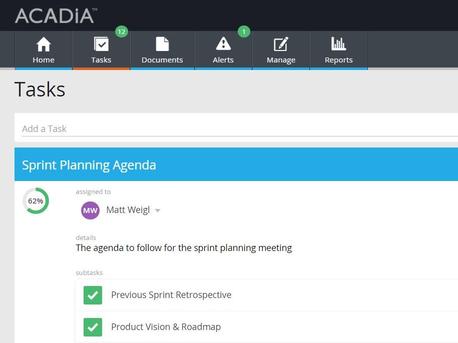Disruption in Your Workforce Strategy
Distilling research findings about changes in workforce learning trends

The last four or five quarters at SAI have been packed with hundreds of interviews, workshops and conversations with our customers, industry experts and others about changes in workforce learning as we’ve gathered requirements for Acadia and worked through early adopter projects. I’ll attempt to distill some of the larger points in this blog and we’ll continue to share our findings in individual conversations if you’re interested in more detail.
I have been reminded several times through this process of Clay Christensen. Christensen has proven to be one of the foremost business strategists in our time and I’ve watched him accurately predict the disruptive innovation of several industries (technology, telcos, education) during my time at PwC and SAI. The increasing pressure being exerted in some segments of the workforce today around learning, compliance and change management are consistent with some of the fundamental changes that Christensen has predicted in the past.
Demographics and Work Arrangements
Whether you like PwC, Accenture, Deloitte or dozens of other consulting firm’s predictive capabilities, all are forecasting an accelerating transition to more part time, contract and contingent workers in the years ahead with a consensus forecast of more than 50% by 2025. In parallel, work component design, Glassdoor, LinkedIn and a confluence of demographic factors are aligning to make employee portability an emerging threat for enterprises as we struggle to build capacity in a workforce that often isn’t aligned with job requirements. Sprinkle in a host of retiring Boomers with little documentation around best practices and you have the potential for rapid deterioration in quality and differentiation among large enterprises.
Our customers have explained in great detail across multiple verticals (retail, healthcare, dining, manufacturing, retail banking) that the cycle time to onboard new team members has been largely unchanged over the last several years despite large investments in technology, staff and processes. While voicing increasing support for automated recruiting platforms that are shortening the recruiting cycle, getting employees up to speed quickly and consistently has continued to constrain organizational growth and effectiveness. Rapid turnover is exacerbating the problem as HR professionals struggle to meet a larger regulatory burden with an accelerating number of staff changes.
Long Live Content; Content is Dead
A second recurring theme across many of our workshops revolves around the idea that organizations have created significant amounts (“mountains” …) of content (LMS content, learning aids, etc.), all with the hope of enabling more effective training and development only to be disappointed that employees can’t find the right content at the right time and quickly give up looking for it. Many of our customers described high six and low seven figure investments in LMS platforms that are essentially unused except for deploying mandatory compliance training as the staff that are most qualified to create the content don’t have the time or experience with the tools to be able to quickly create training content.
‘Content freshness” was identified in multiple workshops as another serious concern, i.e. the inability to figure out how to quickly update content on a timely basis and get rid of stale content before it creates other disruptions; this appears to be a particular problem with HR and other back office content. One of our customers referred to this as “lurking” content, another as “content debt”. The emerging “content debt” problem was identified in approximately 65% of our interviews as the primary obstacle to improving employee effectiveness as content owners don’t have the capacity or detailed process experience to rework, replace or remove the content.
Access Speed and Mobility
By my count we have heard seven different variations of the “if I can find the answer to who that guy was in “Taken” on my phone, why can’t I find out what our IT policy is about <fill in the blank>.” Problems with content accessibility were most often associated with the usability of the content (scrolling in Office documents) and inconsistencies in the content across different devices. Subject matter expert content creators don’t have the time or experience to figure out how to work around technical issues and no clear owner appears to exist for these problems in either the business or IT.
More to Come
We are accumulating specific industry and functional domain business case and ROI information around these issues through our Acadia Early Adopter program and we would be happy to share that information with you (whether you are an Acadia customer or not). Please drop me a note at rhughes@systemsalliance.com if you have questions or would like to discuss any of this further.
Ready to crush your goals?
"*" indicates required fields



